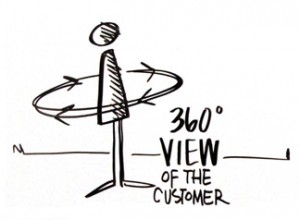 A customer centric focus is key
A customer centric focus is key
Every employee in an organization supports the sales process, but many don’t realize how their role impacts the bottom line. Successful companies spell it out so everyone understands their contribution to long-term profitability.
The idea that everyone is in sales across the company is not a new one, but not all embrace it.
If a company wants to create a culture where every employee buys into the concept, it must ensure everyone understands their role in the sales process and how they support successful delivery.
Retention and Customer Experience
The most essential quality of a sales-driven culture is the understanding profitability goes beyond the initial sale; it’s about retaining the customer and recurring business. This means your salesperson doesn’t exit the relationship once the deal is done; your customer may want that initial point of contact to remain part of the service delivery once it’s handed over to project managers and technical staff, even if it’s just informally checking in with the customer throughout the project’s life cycle.
That being said, project managers and technical staff are a key factor in delivering a satisfying customer experience. They make a lasting impression that aligns with the initial positive experience they had during the sales process and will play a large role in driving repeat business.
The Little Things Add Up
Routine interaction with your organization leaves an indelible mark on your clients. Support staff who believe that everyone is in sales will play a critical role when they interact with customers. It can be as simple as someone who answers the phone taking the time to address a billing inquiry rather than passing it over to a departmental voice mail. Customers will remember those efforts.
Accounting and finance staff also contribute to the overall customer experience – they are part of the sales process too, even if they don’t participate in the project delivery. Collecting payments through accurate and prompt billing are a simple way of keeping customers happy; it supports a brand image with which people want to engage.
Behind the Scenes
There are also people who do not engage with your customer directly who have an impact on project delivery. Internal IT staff, for example, may not have any contact with clients, but the systems they manage support successful project delivery. Failure of any of these systems, such as billing and accounting, will have negatively affect the end customer and sour their experience.
Everyone on the Same Page
Employees understand their wages are paid through sales, but they may not understand how their particular job function supports revenue generation and margin retention, so you must educate them on how everyone is in sales:
- Ensure every employee understands the goals of your company, its products and services, and target audience;
- Make sure everyone has comprehensive and accurate information about customers so they can perform tasks with the customer’s perspective in mind;
- Have a representative from each department shadow salespeople to understand how they work;
- Have salespeople make a presentation to employees on what they do throughout the sales process;
- Have a formal process to transition customers from sales to delivery and evaluate it from a customer’s perspective.
- Reward all employees for leads they generate.
Ultimately, a profitable customer engagement is more than winning the business. Having everyone in the organization understand the project delivery process and how they support it is the foundation of a company where everyone is in sales.


